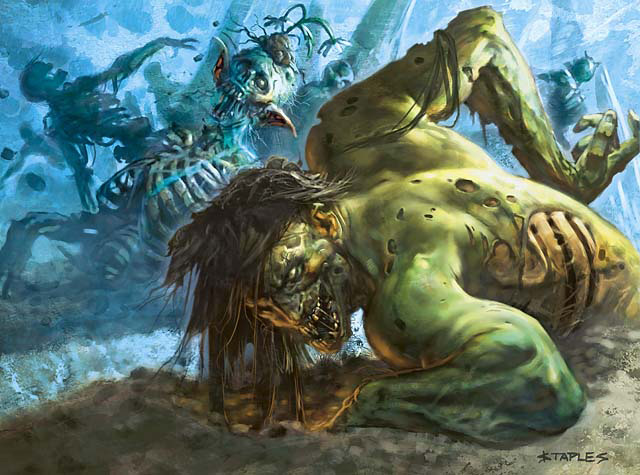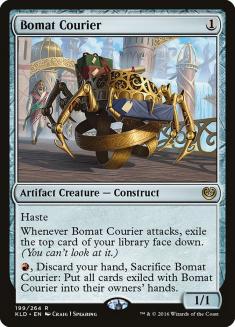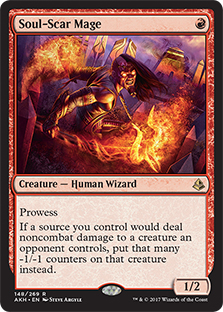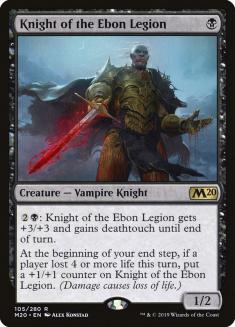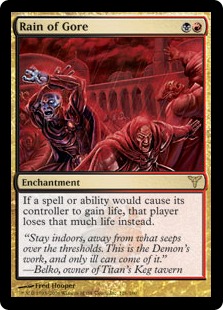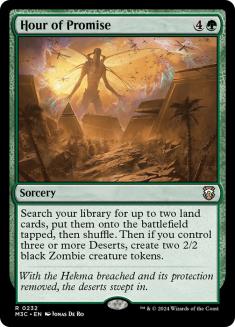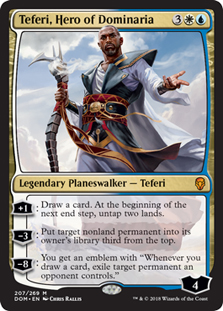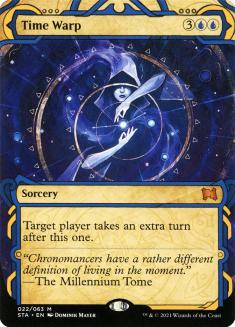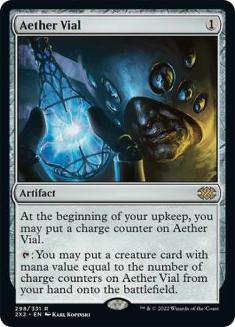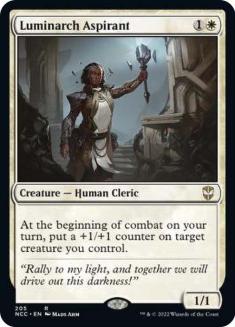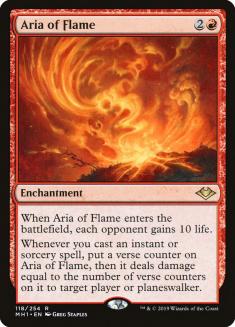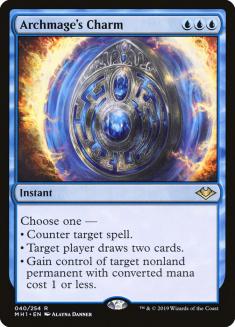The holiday season is the perfect time to take stock and look ahead to the coming year. After a highly eventful series of releases, Modern players have just about adjusted to the impact of Zendikar Rising and already have Kaldheim previews to look forward to. Santa didn’t grant my request for the head of Uro, Titan of Nature’s Wrath on a silver platter but I’m holding out hope for 2021.
This is usually a quiet time in the Magic calendar but many players picked up Modern again to earn a slot in the Kaldheim Championship at the end of this long winter. Their results offer a snapshot of the format for anyone preparing to dive back in:
Creatures (17)
- 4 Death's Shadow
- 4 Monastery Swiftspear
- 4 Bomat Courier
- 1 Kroxa, Titan of Death's Hunger
- 4 Scourge of the Skyclaves
Lands (19)
Spells (24)

Rakdos Death’s Shadow (Lurrus) has delivered on the early hype, becoming Modern’s default aggressive deck and default Thoughtseize deck just as Rakdos Prowess (Lurrus) was under the old companion rule. Building around Death’s Shadow was always somewhat tricky as it encouraged card choices like Street Wraith and in-game decisions such as intentionally taking speculative damage in case you draw Death’s Shadow that have a steep cost otherwise. At first glance Scourge of the Skyclaves offers enough redundancy on Death’s Shadow to justify leaning harder on those effects, but reliably damaging the opponent to enable an early Scourge is much more easily said than done.
With this in mind, it’s no surprise that Scourge first found success in hyper-aggressive Zoo shells with a heavy focus on one-drops. Confined to two colours and with severe deckbuilding constraints, Rakdos Death’s Shadow must work harder to find backup for Monastery Swiftspear.
Soul-Scar Mage is noticeably worse in Rakdos Death’s Shadow than in Rakdos Prowess — many of your cheap spells are discard or removal that can be time-sensitive and it’s hard to justify delaying Mishra’s Bauble for a turn just for a prowess trigger (a choice that Swiftspear doesn’t force you to make). Bomat Courier has a high ceiling but is quickly obsoleted by any blocker and even more vulnerable than it looks when Lava Dart and Wrenn and Six are everywhere. I tried Knight of the Ebon Legion as a scalable threat that dodges those cards but with no more success.
This overall lack of threats and the conditionality of your premier threats is the main weakness of Rakdos Death’s Shadow. It plays more like the Jund Death’s Shadow decks that were briefly dominant after Aether Revolt — the Jund Midrange philosophy pushed to a natural extreme — than its recent predecessor in Rakdos Prowess and is more susceptible to the typical midrange problem of being saddled with situational cards — not just the usual fail cases for discard and removal, but cards like Temur Battle Rage that are your most important tool in some situations are laughably bad in others. Thankfully, Thoughtseize can solve most problems (just ask Ari Lax!) and having the biggest and cheapest threats in the format goes a long way.
If you’re in the market for a more traditional Thoughtseize deck in Modern, Willy Edel still has your back:
Creatures (13)
Planeswalkers (3)
Lands (20)
Spells (24)

If finding good one-drops for Rakdos Death’s Shadow was a challenge, finding playable two-drops for Rakdos Midrange was impossible — Tarmogoyf was always the best green card in Jund. Magmatic Channeler looks mopey but is strong enough to make straight Rakdos possible, allowing you to trade in or dig for conditional cards and becoming a 4/4 quickly, despite the occasional clash with Kroxa, Titan of Death’s Hunger. Staying in Rakdos allows you to maindeck Blood Moon, an obvious ace against Primeval Titan or Omnath, Locus of Creation that often steals games in matchups where it ‘should’ underperform thanks to the warped incentives in Modern manabase construction.
A card pool this large has obscure but perfect answers to specific problems. Rain of Gore has earned attention as a way to attack both the core strategy and the incidental lifegain of the various Heliod, Sun-Crowned shells while preventing Omnath and Uro from stabilizing the game for Four-Colour Control — still the menace of the format.
Creatures (6)
Planeswalkers (8)
Lands (27)
Spells (19)

Creatures (7)
Planeswalkers (6)
Lands (26)
Spells (21)

The quirks of the Magic Online economy mean that Four-Colour Control is prohibitively expensive to build there even with card rental services, making it rarer in the average event than it should be. In high-stakes, exclusive tournaments — the Magic Online Championship Series and the Showcase Qualifiers that feed it — variants of this deck are the most popular archetype by a fair margin. A flexible manabase powered by fetchlands supports the best examples of each type of interaction as well as all the most pushed multicoloured threats since War of the Spark.
Despite the wealth of options across all colours, Four-Colour Control lists have mostly converged towards this list within a few cards. The main point of disagreement surrounds the five-drop payoffs.
Teferi, Hero of Dominaria is a reliable mid-game threat that answers anything and lets you hold up cheap interaction on the turn you cast it; Hour of Promise brings you directly to your Field of the Dead end-game; and Time Warp lets you convert any planeswalker or creature on the battlefield into an insurmountable advantage, including building towards a Wrenn and Six ultimate that then infinitely loops that Time Warp.
Both sorceries highlight the importance of Mystic Sanctuary — Hour of Promise ‘just’ allows it to make your finisher immune to most interaction while Time Warp converts every Mystic Sanctuary and thus every fetchland into an extra turn.
The rest of the format has identified Four-Colour Control’s few structural weaknesses and is pressing those as hard as possible. Anyone playing red has Blood Moon, Boil, or both depending on their own mana requirements. Other decks are poised to exploit Four-Colour Control’s relatively thin range of interaction — a handful of removal spells and a few counterspells that mostly don’t overlap in what they’re strong against. A combo deck that can play through counters (especially if you are naturally resistant to Force of Negation) or a creature-heavy deck that doesn’t care much about lifegain or blockers on the ground can catch the rainbow juggernaut off-guard.
Creatures (28)
- 4 Spike Feeder
- 3 Auriok Champion
- 4 Arbor Elf
- 2 Scavenging Ooze
- 2 Walking Ballista
- 3 Ranger-Captain of Eos
- 4 Heliod, Sun-Crowned
- 4 Conclave Mentor
- 2 Skyclave Apparition
Lands (15)
Spells (17)

Creatures (30)
- 4 Auriok Champion
- 4 Walking Ballista
- 4 Giver of Runes
- 4 Ranger-Captain of Eos
- 4 Heliod, Sun-Crowned
- 4 Skyclave Apparition
- 2 Archon of Emeria
- 4 Luminarch Aspirant
Lands (23)
Spells (7)

The Heliod, Sun-Crowned decks fit both descriptions while lining up well against Rakdos Death’s Shadow thanks to cheap removal in Path to Exile and Skyclave Apparition, lifegain to frustrate Scourge of the Skyclaves, and Auriok Champion as an unkillable obstacle. Ari Lax has already given you six seasons and a movie on Selesnya Company and the deck continues to perform at the highest level after Michael Jacob’s Magic Online Championship Series win.
Selesnya Company’s biggest weakness becomes clear when you sort by converted mana cost — Heliod, Ranger-Captain of Eos, and Skyclave Apparition give you a glut of three-drops already and Spike Feeder adds another four in offering the combo with Heliod. This maximizes Collected Company, which wants you to fill out the top of its range as much as possible, but Company itself bloats your curve even further. Your one-drop accelerants help with this but open up the classic problem with this approach — your draws become heavily reliant on these one-drops and a light breeze toppling your Arbor Elf can render your hand non-functional but playing more lands so that you can cast your spells without them leaves you prone to flooding.
The Boros Heliod deck popularized by Sam Pardee (Smdster) has fewer fast combo draws but picks up a strong and stable fair game in return. Cavern of Souls, Aether Vial, and Ranger-Captain of Eos let you shrug off counters and Vial acts as an accelerant of sorts that makes it easier to sink mana into Heliod or Walking Ballista. Luminarch Aspirant lets Ballista, or any creature, become a formidable threat over time and imitates Auriok Champion in enabling a Turn 4 Heliod + Walking Ballista kill. Finally, the red splash for Magus of the Moon and Boil alone reiterates the power of those effects in Modern right now.
Faster aggro-combo decks have risen up to exploit this same weakness:
Creatures (19)
Lands (20)
Spells (21)
- 4 Steelshaper's Gift
- 1 Cranial Plating
- 1 Paradise Mantle
- 4 Mishra's Bauble
- 2 Springleaf Drum
- 4 Sigarda's Aid
- 4 Colossus Hammer
- 1 Shadowspear
Sideboard

Orzhov Equipment (Lurrus) went from a gimmick on Tom Ross’s stream to the talk of the town, picking up several Modern Challenge wins this month. Compared to earlier, all-in iterations with the likes of Magmatic Theft, this list leverages Puresteel Paladin as a fast combo enabler that’s also an engine card in longer games, and Cranial Plating finally shows up again as a cheap, lethal equipment when you don’t have Paladin or Sigarda’s Aid. A deck like this is natural prey for Rakdos Death’s Shadow but Auriok Champion in the sideboard continues to do great work there. Most other decks have a light smattering of removal and need it immediately to stay alive.
Creatures (14)
Lands (18)
Spells (28)

Creatures (14)
Lands (17)
Spells (29)
- 2 Forest
- 1 Island
- 2 Serum Visions
- 4 Might of Old Krosa
- 4 Vines of Vastwood
- 4 Groundswell
- 2 Distortion Strike
- 2 Apostle's Blessing
- 1 Become Immense
- 4 Blossoming Defense
- 3 Scale Up
Sideboard

Infect has been a generous patron of Tom Ross’s trophy cabinet for years and is always waiting for the right time to announce its return. Typically this happens when the format is warped around a linear deck like Krark-Clan Ironworks or Hogaak, Arisen Necropolis — Infect can match them on speed while throwing in relevant disruption. In this case, Infect gets to beat up on slower strategies (or anyone trying to gain infinite life!) as well as decks like Equipment trying to do the same thing while hoping to dodge Thoughtseize and Fatal Push; if you walk through the valley of the shadow of death, you must fear no evil.
Creatures (6)
Lands (15)
Spells (39)

Caleb Scherer is winning with Gifts Storm as always but you should take note when others are too. The prevalence of Lurrus of the Dream-Den as a companion incentivizes the use of white removal that exiles, notably Path to Exile and Skyclave Apparition, which both line up poorly against Goblin Electromancer and Baral, Chief of Compliance. If you can untap with either reliably, Gifts Storm is among the most powerful decks in Modern even after all this time.
Blood Moon and Boil bring their double act to Storm sideboards too but Aria of Flame is also outstanding as a new angle of attack that kills Death’s Shadow and Scourge of the Skyclaves. The biggest problem for Gifts Storm is that every form of interaction — removal, discard, counters, graveyard hate — has some utility against it, but interaction in general is in short supply in current Modern and there are various sideboard plans that let you shore up any specific weakness.
Ross Merriam made the case for Ad Nauseam a few weeks ago so I’ll hand him the conch for this one. His reminder that Infect is the nightmare matchup doesn’t bode well given recent results but a format with such a diverse mix of decks will always have a boogeyman somewhere. Modern is not for cowards!
As Modern takes this linear turn, the blue decks can and must adapt. You don’t have to choose between Thoughtseize and Cryptic Command:
Creatures (4)
Planeswalkers (3)
Lands (26)
Spells (27)

These pure control decks may be a better fit for a metagame that demands interaction early and often. Thoughtseize patches up a lot of holes for Sultai Control — it gives you a proactive Turn 1 play, it lets you chain into another spell when you spend your turn casting Uro, and it clears the way for Uro before it escapes. Crucially, Thoughtseize also gives you information on how to sequence your more conditional interaction and can be the ideal mid-game Mystic Sanctuary target when you know what you need to hit.
Archmage’s Charm is the main reward for running a conservative manabase and adopting a more reactive stance than the planeswalker-heavy Four-Colour Control lists. The first two modes are inefficient, as you’d expect from a Charm, but they pair nicely, as the threat of a counter suggests leading with a weaker spell that gives you more room to draw cards, but the fear of giving the control deck more cards and time is an incentive to force out the counter with a stronger threat.
This dynamic is familiar to control matchups but Archmage’s Charm is the first card to embody both halves of it. The third mode is very powerful in a format where Entrancing Melody is a go-to sideboard card and there’s even more flexibility here — Aether Vial isn’t as safe as it appears!
Once again, Archmage’s Charm and Mystic Sanctuary complement each other perfectly. It’s much easier to fire off the first Charm to draw some cards and amass resources knowing that any fetchland can rebuy the Charm to lock up the game later.
Creatures (14)
- 4 Primeval Titan
- 4 Elvish Reclaimer
- 4 Dryad of the Ilysian Grove
- 1 Skyclave Apparition
- 1 Tangled Florahedron
Lands (34)
- 2 Forest
- 3 Wooded Foothills
- 1 Plains
- 4 Windswept Heath
- 1 Snow-Covered Plains
- 2 Snow-Covered Forest
- 1 Sacred Foundry
- 1 Selesnya Sanctuary
- 2 Temple Garden
- 1 Ghost Quarter
- 4 Flagstones of Trokair
- 1 Vesuva
- 2 Valakut, the Molten Pinnacle
- 1 Bojuka Bog
- 1 Cavern of Souls
- 1 Radiant Fountain
- 1 Blast Zone
- 2 Field of the Dead
- 3 Castle Garenbrig
Spells (12)

Selesnya Reclaimer has come a long way since my rough sketch in August, becoming the new champion of the Primeval Titan pillar of Modern. Will Krueger won the Modern Showcase Championship a few weeks ago after an absurd run of regular Challenge results in a metagame seemingly hostile to big mana strategies. The default aggressive deck has a fast clock backed up by Temur Battle Rage, discard, and Blood Moon; the popular blue decks have a fast proactive plan as well as the best reactive tools. Amulet Titan has struggled to compete in this setting. Why has Selesnya Reclaimer thrived?
The key is that this is really a midrange deck harnessing Primeval Titan as the best end-game against anyone fighting over the battlefield. Elvish Reclaimer and Eladamri’s Call give you several toolboxes with fast access to silver bullets that can win by themselves — untapping with Elvish Reclaimer and threatening Bojuka Bog is a game-ender against Oops All Spells or Dredge. The white removal can stave off Scourge of the Skyclaves or a creature combo and buy time for you to assemble Dryad of the Ilysian Grove + Valakut, the Molten Pinnacle or put the opponent in check with Primeval Titan.
This strategy is versatile but has a glaring weakness to linear decks like Belcher or Ad Nauseam that aren’t vulnerable to anything in your bag of tricks. Switching white for blue lets you fight over the stack and remain competitive here, as Piotr Glogowski showed in a recent Modern Challenge:
Creatures (12)
Lands (29)
- 1 Polluted Delta
- 1 Flooded Strand
- 2 Snow-Covered Island
- 1 Snow-Covered Forest
- 1 Oboro, Palace in the Clouds
- 1 Breeding Pool
- 1 Ghost Quarter
- 1 Simic Growth Chamber
- 1 Vesuva
- 1 Flooded Grove
- 4 Misty Rainforest
- 2 Scalding Tarn
- 2 Valakut, the Molten Pinnacle
- 1 Hinterland Harbor
- 1 Cavern of Souls
- 1 Radiant Fountain
- 1 Blast Zone
- 2 Field of the Dead
- 1 Castle Garenbrig
- 1 Mystic Sanctuary
- 1 Zagoth Triome
- 1 Ketria Triome
Spells (19)

Simic Titan rose to steal the throne in a format defined by Oko, Thief of Crowns but saw no reason to stick around. This reboot has picked up game-changers in Dryad and Uro to join the biggest finisher in Primeval Titan and gets to use proven, premium sideboard cards in Mystical Dispute and Aether Gust.
Finally, I have good news for anyone holding out for a certain hero…
I’ve watched a lot of coverage on the SCG Tour. I’ve had the privilege of doing some coverage for the SCG Tour. Every time they roll the promotional slides for SCG Premium, I see Bryan’s face and this article staring back at me. I wanted it to be true so badly, but as the months — then years — passed, I had to accept that Living End was as dead as a doornail.
Until?!
The Electrodominance + As Foretold combo decks have always appealed to me but I took their lack of results to mean there was some fundamental flaw I would only discover after I sunk too much time into them. This shell has quietly gained several important tools since Bryan delivered his prophecy — Crashing Footfalls gives a form of redundancy in the payoff column that dodges graveyard hate, and Waker of Waves makes it much easier to present a lethal Living End. Force of Negation is excellent as a free answer to problematic hate like Rest in Peace or opposing combo decks, and Force becoming the format’s safety check on combo is good news, as you can pick a fight with Electrodominance on the opponent’s turn when your Forces are active and theirs aren’t.
Izzet Living End continues the theme of linear decks adopting powerful sideboard hammers — Blood Moon once again, but also Chalice of the Void for decks flush with one-drops like Rakdos Death’s Shadow or any Prowess variant. Unlike its predecessors that had to cascade into Living End, this deck can run as many one-drops as it pleases, but its combo infrastructure and the need for cycling creatures eats up space that might be earmarked for Opt or Serum Visions normally.
The beauty of writing about Modern is that you can convey important information while knowing that you’re only ever scratching the surface. Use this as a blueprint for preparing for your next Modern tournament — with the caveat that you can be blindsided at any time. Expect the unexpected!

